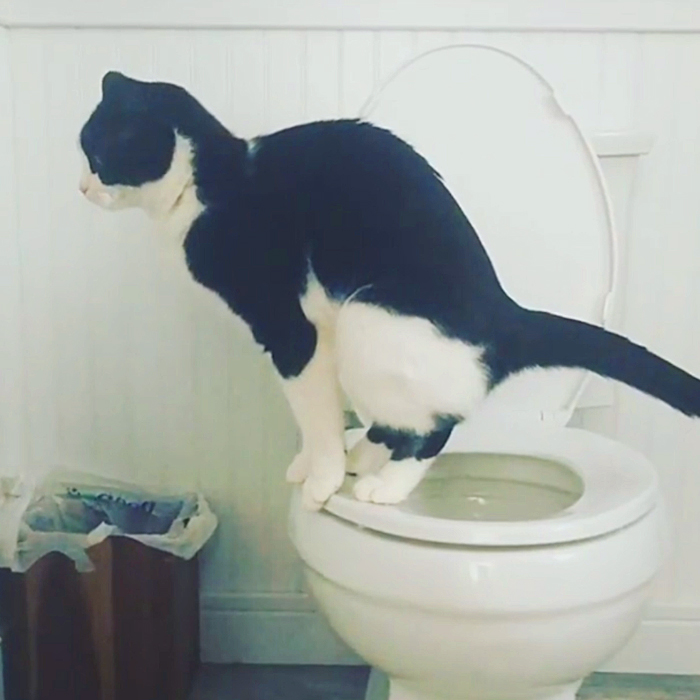We have noticed this great article involving Can You Flush Cat Poop Down The Toilet? below on the web and decided it made sense to discuss it with you in this article.

Intro
As cat owners, it's necessary to be mindful of just how we deal with our feline pals' waste. While it may appear practical to purge feline poop down the commode, this practice can have damaging consequences for both the atmosphere and human wellness.
Alternatives to Flushing
The good news is, there are safer and a lot more liable ways to get rid of pet cat poop. Consider the following options:
1. Scoop and Dispose in Trash
One of the most usual approach of disposing of cat poop is to scoop it into a naturally degradable bag and throw it in the trash. Make sure to utilize a specialized trash scoop and get rid of the waste immediately.
2. Use Biodegradable Litter
Choose biodegradable pet cat clutter made from products such as corn or wheat. These trashes are environmentally friendly and can be safely gotten rid of in the trash.
3. Bury in the Yard
If you have a backyard, think about burying pet cat waste in an assigned area far from veggie gardens and water resources. Make sure to dig deep sufficient to avoid contamination of groundwater.
4. Install a Pet Waste Disposal System
Invest in a family pet garbage disposal system especially designed for cat waste. These systems make use of enzymes to break down the waste, lowering smell and ecological effect.
Health and wellness Risks
In addition to ecological worries, flushing cat waste can likewise position wellness dangers to humans. Pet cat feces may contain Toxoplasma gondii, a bloodsucker that can cause toxoplasmosis-- a possibly severe illness, specifically for pregnant females and individuals with weakened body immune systems.
Environmental Impact
Flushing pet cat poop introduces harmful microorganisms and bloodsuckers right into the supply of water, presenting a substantial risk to aquatic environments. These impurities can adversely influence marine life and compromise water quality.
Conclusion
Responsible family pet ownership extends past supplying food and shelter-- it also entails appropriate waste management. By avoiding flushing cat poop down the commode and choosing different disposal techniques, we can minimize our ecological footprint and shield human health and wellness.
Why Can’t I Flush Cat Poop?
It Spreads a Parasite
Cats are frequently infected with a parasite called toxoplasma gondii. The parasite causes an infection called toxoplasmosis. It is usually harmless to cats. The parasite only uses cat poop as a host for its eggs. Otherwise, the cat’s immune system usually keeps the infection at low enough levels to maintain its own health. But it does not stop the develop of eggs. These eggs are tiny and surprisingly tough. They may survive for a year before they begin to grow. But that’s the problem.
Our wastewater system is not designed to deal with toxoplasmosis eggs. Instead, most eggs will flush from your toilet into sewers and wastewater management plants. After the sewage is treated for many other harmful things in it, it is typically released into local rivers, lakes, or oceans. Here, the toxoplasmosis eggs can find new hosts, including starfish, crabs, otters, and many other wildlife. For many, this is a significant risk to their health. Toxoplasmosis can also end up infecting water sources that are important for agriculture, which means our deer, pigs, and sheep can get infected too.
Is There Risk to Humans?
There can be a risk to human life from flushing cat poop down the toilet. If you do so, the parasites from your cat’s poop can end up in shellfish, game animals, or livestock. If this meat is then served raw or undercooked, the people who eat it can get sick.
In fact, according to the CDC, 40 million people in the United States are infected with toxoplasma gondii. They get it from exposure to infected seafood, or from some kind of cat poop contamination, like drinking from a stream that is contaminated or touching anything that has come into contact with cat poop. That includes just cleaning a cat litter box.
Most people who get infected with these parasites will not develop any symptoms. However, for pregnant women or for those with compromised immune systems, the parasite can cause severe health problems.
How to Handle Cat Poop
The best way to handle cat poop is actually to clean the box more often. The eggs that the parasite sheds will not become active until one to five days after the cat poops. That means that if you clean daily, you’re much less likely to come into direct contact with infectious eggs.
That said, always dispose of cat poop in the garbage and not down the toilet. Wash your hands before and after you clean the litter box, and bring the bag of poop right outside to your garbage bins.
https://trenchlesssolutionsusa.com/why-cant-i-flush-cat-poop/

I found that article about Don’t flush cat feces down the toilet while doing a search on the internet. Those who liked our article please do not forget to share it. Thanks so much for taking the time to read it.
Top Article